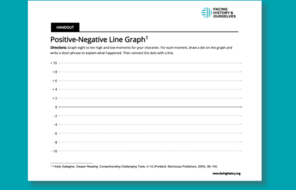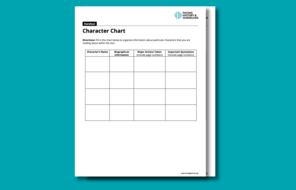Character Charts
At a Glance
Language
English — USSubject
- English & Language Arts
- History
- Social Studies
Grade
6–12Overview
What Are Character Charts?
The Character Charts strategy involves using graphic organizers to help students organize information about major and minor characters in a text. Completed character charts are useful tools for writing essays and studying for tests. They’re often used to record information about literary characters, but they can be adapted for historical figures.
Lesson Plans
How to Use Character Charts
Unlimited Access to Learning. More Added Every Month.
Facing History & Ourselves is designed for educators who want to help students explore identity, think critically, grow emotionally, act ethically, and participate in civic life. It’s hard work, so we’ve developed some go-to professional learning opportunities to help you along the way.
Exploring ELA Text Selection with Julia Torres
On-Demand

Working for Justice, Equity and Civic Agency in Our Schools: A Conversation with Clint Smith
On-Demand

Centering Student Voices to Build Community and Agency
On-Demand
















